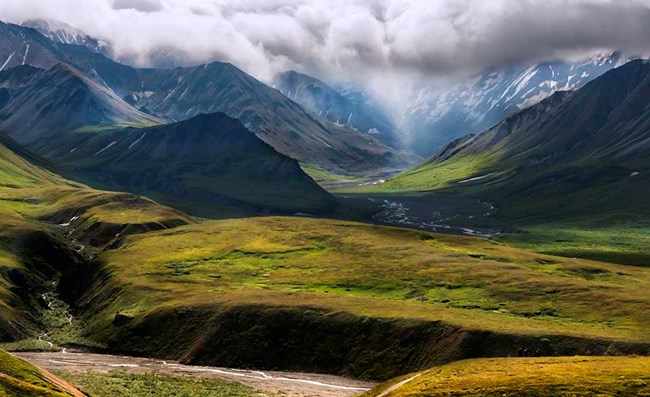Last updated: December 30, 2019
Article
Alpine Tundra Species Richness

Species richness of multiple functional groups peaks in alpine tundra in subarctic Alaska
Abstract
Climate warming has initiated changes to vegetation across subarctic North America with potential to dramatically alter the distribution of biodiversity of vascular plants, mosses, and macrolichens. However, landscape‐scale studies of the patterns and drivers of species richness in this region are scarce, raising the possibility that dramatic changes to biodiversity could occur undetected over a wide area with serious consequences for ecosystem integrity and conservation. We used a hierarchical, systematic design to compile a uniquely large and comprehensive diversity dataset for our study area in subarctic North America. We utilized a unified sampling frame at the landscape scale to record diversity of vascular plants, mosses, and macrolichens as the three primary components of vegetation species richness. We applied Bayesian hierarchical modeling techniques to identify site attributes associated with richness of the three functional groups. We also examined whether richness of groups was positively or negatively inter‐correlated across multiple spatial scales. Our goal was to quantify the fundamental relationships of species richness with site attributes across this landscape to better understand the possible responses of species richness to habitat changes forecast to occur in the subarctic as a result of a warming climate and other stressors. Moss, vascular plant, and terricolous macrolichen species richness were strongly inter‐correlated, due to an underlying marked positive association of each with increasing elevation into the alpine zone across multiple spatial scales. Our results further reveal varying influences of factors such as soil pH, disturbance, and plant canopy cover on diversity in these physiologically different functional groups. Taken together, the patterns revealed by our work provide a new framework to consider how predicted habitat changes wrought by warming climates in interior Alaska may affect fundamental diversity patterns of primary producers in the future, with important implications for ecosystem function and conservation.
Roland, C. A., S. E. Stehn, and J. H. Schmidt. 2017. Species richness of multiple functional groups peaks in alpine tundra in subarctic Alaska. Ecosphere 8(6):e01848.
